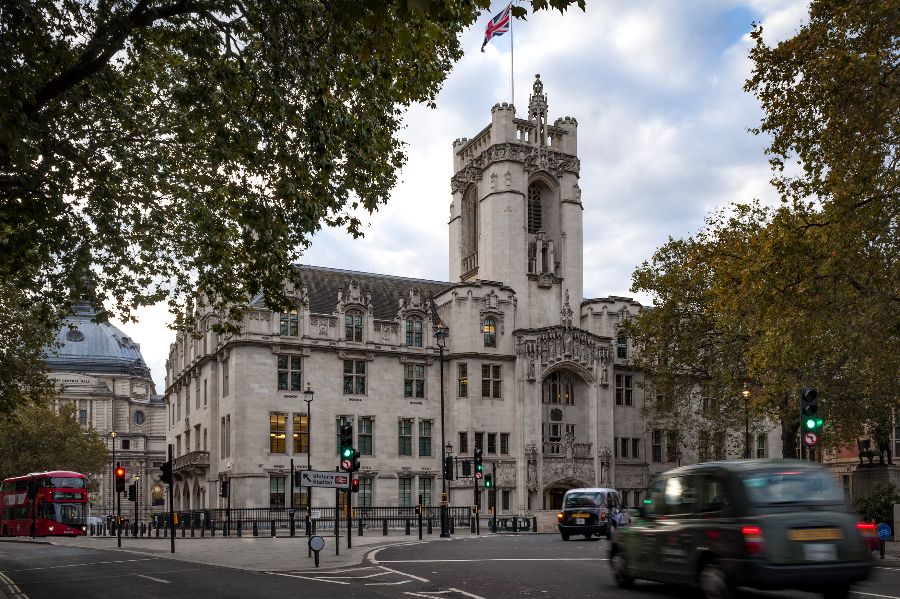
Supreme Court decision recognised as authoritative re-statement of the law of vicarious liability

Vicarious liability has been the subject of much debate in recent years, with the modern approach to vicarious liability taken by the courts having developed over a series of decisions in the past 20 years. Vicarious liability is a long-established principle under which an “employer” can be held liable to a person injured by the negligent actions (or omissions) of another “employee”.
As society and the structures of businesses and other organisations have evolved, so too have the legal tests been adapted by which vicarious liability can be established. The law in relation to vicarious liability was again re-stated by the UK Supreme Court in an important case in early 2023, providing a reminder that often the most difficult hurdle for claimants to overcome is the issue of “close connection” (see below).
In October 2023, this Supreme Court decision was recognised in the Court of Session in Edinburgh as an authoritative re-statement of the law of vicarious liability.
How is vicarious liability established?
The courts have developed a two-stage test, both elements of which must be established.
Stage 1: This is concerned with the relationship between the defender (the company or organisation) and the individual wrongdoer (the person who has negligently caused the injury or harm).
In most cases, this question is easily answered. Most cases still arise within a direct employment relationship. However, the courts have had to consider a range of other legal relationships in this area of the law. These have included the relationship between: the prison service and a prisoner undertaking prison work; a company and a medical practitioner contracted by the company to examine prospective employees; and, as we shall see, members of religious organisations.
If there is not a direct employer/employee relationship, the courts consider whether the relationship between the defender and wrongdoer is “akin to employment”.
Stage 2: This focuses on the wrongdoer’s conduct. The question is whether the wrongdoer’s conduct is sufficiently connected with the job the wrongdoer was employed to do. This part of the test is referred to as the “close connection test”. An employer will not be held vicariously liable merely because the wrongdoer happened to be at work when he or she caused the harm. It is necessary to show that the particular conduct which caused the harm was closely connected with the job that person is employed to do.
Trustees of the Barry Congregation of Jehovah’s Witnesses -v- BXB
Both stages were considered in this case which went to the Supreme Court in February 2023.
The case involved a rape of a woman (Mrs B) by a man (M) who was an elder of the Jehovah’s Witnesses congregation.
The court noted that the Jehovah’s Witnesses organisation does not have a clergy-laity division. Two groups of men have congregational responsibilities: ministerial servants and, above them, elders (or overseers). Ordinary members of a congregation, i.e. neither ministerial servants nor elders, are known as publishers.
Mrs B and her husband had begun attending religious services of the congregation in 1984. The couple quickly became friends with M and his wife. M was a ministerial servant at the time. A close friendship formed. Mrs B’s evidence was that Jehovah’s Witnesses were encouraged to associate only with each other, particularly those who were “good associations” because of their standing in the congregation. The two couples became very close friends. The families had lots in common. They met up frequently and went on trips together.
After a few years, M’s behaviour changed. By this point, M had become an elder. He began to abuse alcohol and appeared depressed. M frequently argued with his wife. Mrs B and her husband provided support. Mrs B’s evidence was that around the same time M began behaving flirtatiously towards her.
Shortly afterwards, through concern at M’s behaviour, Mrs B and M’s wife spoke to M’s father (who was also an elder). M’s father requested that Mrs B continue to provide support to M.
Over the following weeks, Mrs B continued to provide support to M. At one point, M asked Mrs B to run away with him, which she refused.
After a further few weeks, on one morning, Mrs B, her husband, M and his wife, were taking part in a religious activity known as “auxiliary pioneering” (described as door-to-door evangelising). Afterwards, they went to a local pub for lunch. M drank beer and wine. He argued with his wife and stormed off. M was later found stating that he wished to divorce his wife. On being reminded that divorce was only permitted within the community of Jehovah’s Witnesses on the grounds of adultery, M commented that he would convince his wife that that ground was made out.
Later that afternoon, Mrs B, her husband, M and his wife were back at M’s house with their families. M went to a back room. M’s wife asked Mrs B to speak to M to try to get him to seek help with his depression. Mrs B went to see M. M pushed Mrs B to the floor and raped her.
M was subsequently convicted of the rape and other sexual offences.
Mrs B brought this civil action seeking damages against the trustees of the congregation for their vicarious liability for M’s actions.
The issues for the court
Stage 1 of the test: Was the relationship between the Barry Congregation of the Jehovah’s Witnesses and M “akin to employment”?
The Supreme Court held that the relationship was akin to employment, upholding the rulings of the High Court and Court of Appeal on this point previously. Although elders were not paid, and did not receive any other benefit in kind, the court looked at other factors from previous cases, including other cases involving religious organisations. The court considered the following factors indicated the relationship was “akin to employment”:
- The Jehovah’s Witness organisation is central to the lives of the publishers, ministerial servants and elders;
- The structure of the organisation is hierarchical;
- The organisation exercises control over its members, which goes beyond activities directly related to the dissemination of the Kingdom message;
- In performing their activities as elders and leading the congregation, the elders were the chief conduit of the guidance and teachings of the Jehovah’s Witnesses; they were not carrying on business in their own account;
- Elders were integral to the organisation, the nature of the role was directly controlled by the organisation and its structure. M was required to conduct himself within the rules of the organisation;
- M carried out activities as an integral part of the “business” activities carried on by the defendants (and for their benefit).
Accordingly, Mrs B was successful on stage 1 of the test.
Stage 2 of the test: Was M’s conduct (the attack) closely connected with the “job” he was employed to do?
At the Trial in the High Court and at the Court of Appeal, it had been held that the attack was sufficiently closely connected and that, accordingly, Stage 2 of the test had been met.
It appears that in those lower courts, the reasoning which underpinned that view was around M’s status as an elder. The Court of Appeal commented that ordinary members of the congregation (such as Mrs B) were required to be obedient and submissive to the elders. Mrs B had felt the instruction from M’s father was important to comply with. Mrs B had been taught that elders held a special status within the organisation. In that context, the Court of Appeal had held that the attack occurred because of M’s status as an elder.
However, the Supreme Court overturned the decision of the lower courts and held that Stage 2 of the test had not been met. The Supreme Court considered that the emphasis on M’s status as an elder was not the correct approach to take. The Supreme Court made it clear that the fact that M’s status as a ministerial servant and then elder in the forming of the friendship and continuing support between Mrs B and M was not the most important factor.
The Supreme Court also stated the fact that earlier on the day of the rape, both couples had been engaged in work of the organisation (the auxiliary pioneering) was not the most relevant point.
The Supreme Court emphasised that the correct test was whether the wrongful conduct (the rape) was so closely connected with the “acts which M was authorised to do”. The Supreme Court held that it was not closely connected for the following reasons:
- The rape was not committed by M while carrying out any activities as an elder. He was in his own home and not engaged in performing any work connected with his role as an elder;
- There was no direct connection between the conduct (the rape) and the role assigned to him as an elder;
- At the time of the attack M was not exercising control over Mrs B because of his position as an elder. It was because of her friendship with M that B had gone to the back room. The driving force behind their being together in the room was their personal friendship, not his role as an elder. M did not abuse his position as an elder but did abuse his position as a close friend.
- It could not be said that the attack was a progression from previous behaviour by M. As the court stated: “The violent and appalling rape was not an objectively obvious progression from what had gone before but was rather a shocking on/off attack”.
This has been an important area of the law and this decision is the latest in a series of decisions issued by the Supreme Court in recent years, as it seeks to give as much clarity as possible in this area of law.
If you have any questions or would like to make a claim for compensation for an injury, please contact us for a confidential discussion.
Email Stephen Irvine
Call our personal injury claims team free on 0808 560 0872
Arrange a callback by using our enquiry form
Share this page
- Personal injury claims
- Our personal injury team
- How to make a personal injury compensation claim
- How to choose a personal injury solicitor
- Claim now
- Personal injury claim calculator
- How claims are valued
- Frequently asked questions
- Types of personal injury claim
- How to sue someone in the Scottish courts
- Recent successes
- Testimonials
- Injury Compensation Alliance

